Don Bachardy
- Artist Don Bachardy
- Don's Art
- Contributor Sooyoung Jeong
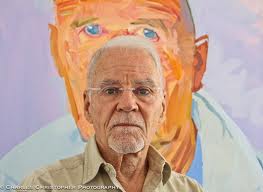
Don Bachardy is an American portrait painter. He was born in Los Angeles, California in 1934. Sometimes, an artist’s life itself gives more impression than their works. Don Bachardy is one of that kind. His love story with Christopher Isherwood is so famous that it was made into a movie called ‘Chris & Don: A Love Story’. From 1956 to 1960, he studied at the Chouinard Art Institute in Los Angeles and had his first solo exhibition at the Redfern Gallery in London in 1961. Bachardy used to draw pencil illustrations for some of Isherwood’s books. He collaborated with Isherwood on 「Frankenstein: The True Story」 in 1973. Despite a 30-year age difference, he lived with Isherwood as a sincere partner until he died. Bachardy painted many portraits of celebrities like Bette Davis, Montgomery Clift and Mary Woronov, although his most frequent subject matter was Christopher Isherwood. In 1985, he had an exhibition called「Drawings of the male nude」 in Pasadena and an exhibition called 「Christopher Isherwood: Last drawings」 at London and Boston in 1990. He published a portrait book called 「Stars in My Eyes」 in 2000. Recently, there was an exhibition at the Craig Krull Gallery in Santa Monica.
His style of drawing is simple. In most cases, he usually depicts men using acrylic or water color. There are some colored paintings, but most of them are black and white. Rather than using techniques, he draws portraits with simple honesty. I think he does this to help audiences to concentrate more on the essential part of the man in the picture and not distract their attention to dazzling visual effects.
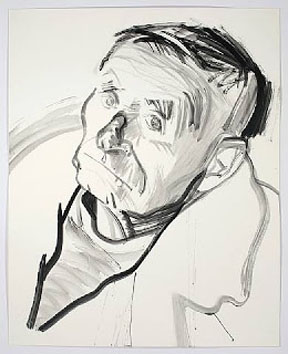
UNTITLED V, 13 DECEMBER(1985)
Bachardy usually works in acrylic paint because it dries fast which he think suits his quick working style. Though it doesn’t allow any mistakes, he enjoys starting with the color. He mentioned about his particular style of work; ‘I start right in with the color. Really, my style of working is very much related to my subject matter. I always work from life and because of that I learned to be spontaneous and to trust my first instinct. Because, you see, I can't waste time. I'm always working under a time pressure. I sometimes feel my whole style as an artist has evolved under those conditions of time and pressure.’ in the interview with William Turner Gallery. Reading this, I could know new meaning of a portrait. It doesn’t only capture the person’s look but also contains the process of communication.
One of the reasons why he does portraits is that he can always be someone while he is working. He considers the process of painting people as a way of communicating with them. By making a “conscious and unconscious effort to identify with them”, he experiences selflessness because he concentrates thoroughly on the models and identifies with them. He says he loves the moment when he forgets to be himself during his work.
Christopher Isherwood, the novelist and Bachardy’s life-long partner, was the painter’s first live model from 1953 until he died in 1986. Most of Bachardy’s widely known works are of Isherwood who was painted in various moods that only the partner who lived with him for a long time could picture. What I love most about this painting is bold strokes of the brush. Though it is bold, I think it still depicts Isherwood’s subtle personality well.
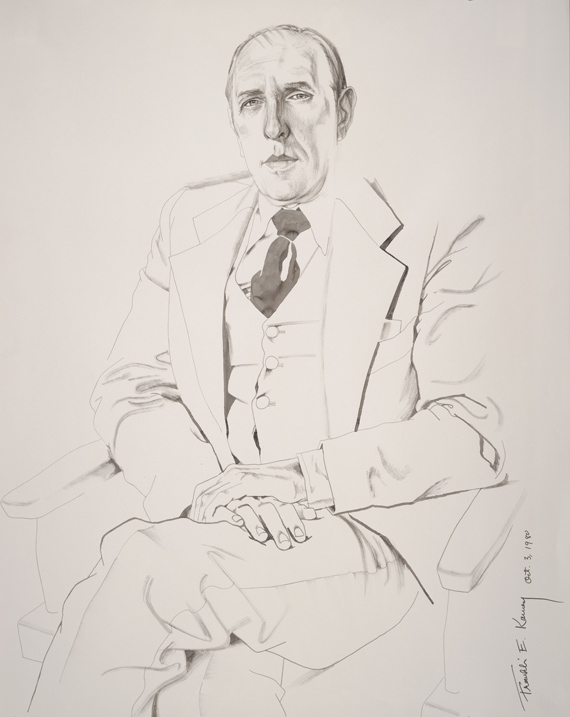
Portrait of Franklin Kameny(1980)
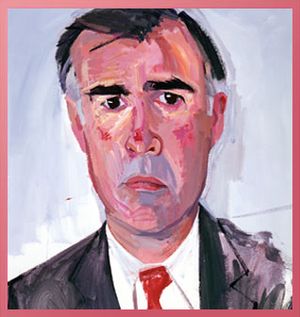
Portrait of Governor Jerry Brown
Bachardy was requested to create this portrait to commemorate Brown's first tenure as governor of California, from 1975 to 1983. This portrait of Jerry Brown was in the middle of heated debates between politicians from different states who had no idea about what the artist's quasi-abstract visual interpretation of the then-governor was. However, Brown told KCRA that the Bachardy portrait looked "unfinished" to him and interpreted the style as "his unfinished work while in office."
According to the article in People magazine in 1984, it was displayed in a third-floor landing in the state Capitol building. However, the artist responded: "If you saw some of the paintings hanging in the Capitol, you'd see why I am not at all insulted that my portrait of Brown is not among them."
The artist's painting of Brown broke with a long-standing aesthetic tradition of governor’s portraits that were closer to realism than bold styles.What Bachardy wrote in his book Stars in My Eyes indicates that working with Brown on the portrait caused some troubles because of the politician's "defensiveness" and seeming discomfort with the project. Bachardy remembered that "the sitting was an ordeal for both of us and made me wish that I could find a way to get my kicks without suffering such stress."
According to the official website of the California State Capitol Museum, the enactment of commissioning California's gubernatorial portraits began in 1879 and was made official in 1931.
1. Artist Don Bachardy's unpopular portrait of Jerry Brown gets renewed attention, <Los Angeles Times>(2010.11.4)
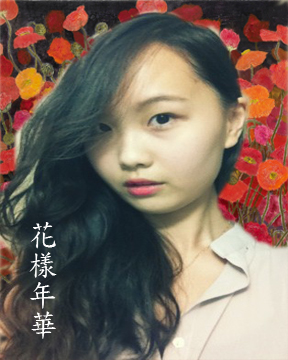
My name is SooYoung Jeong. I’m an exchange student from South Korea. I’m an Aesthetics major. This is my first quarter at UCLA and I’m a junior in Korea. I’m very interested in queer culture and the art related to it. That’s why I am taking Queer Arts in Los Angeles. I believe art can change the world in positive way and that it is one of the most effective means of communication. The subject of this class, queer arts, is rarely discussed in colleges in Korea, so I think this is huge opportunity to learn about it and experience current art works of artists in LA. I am also glad that the students can participate in the discussion actively and share a lot of different and diverse thoughts.
The background image is an opium-poppy which means a lot to me. This flower is named after the emperor of Tang’s beloved consort ‘Yang Guifei’. An opium-poppy is one of my favorite flowers along with a peony and camellia. A red opium-poppy means daydream. I think everyone needs to have a way of gaining comfort. For me, it is through daydreaming. That’s where I get comfort standing aloof from my real life. I’m a dreamer. The word I wrote on my picture means ‘the most beautiful and happiest moment of lifetime’. When we directly translate it, it becomes ‘shiny flower moments’. I believe every single moment of my time is 花樣年華(HwaYangYeonHwa). Throughout this class, I hope I can be more sensitive to my surroundings and gain insight about the world I am living in with others.


